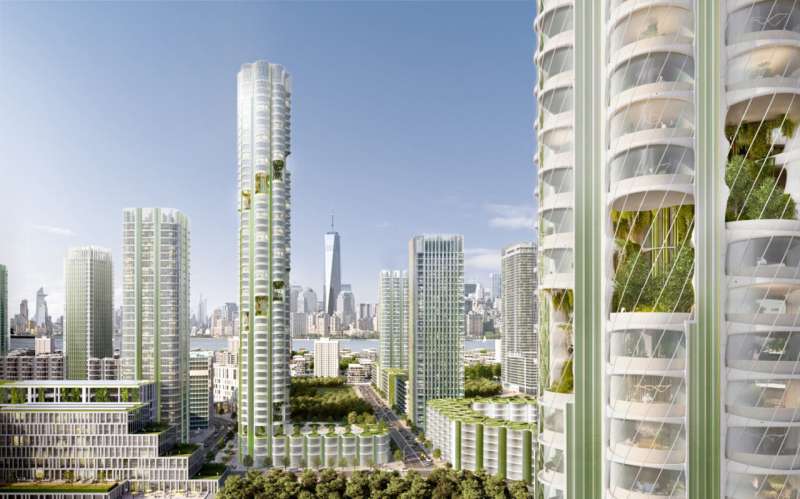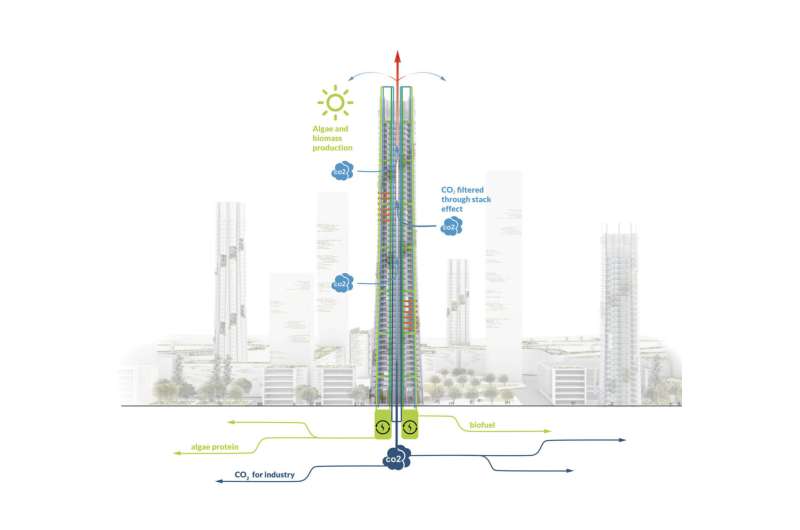MORE MYTHOLOGY
COP26: Architectural firm envisions skyscrapers that capture CO2

Architectural firm Skidmore, Owings & Merrill gave a presentation last week at COP26 suggesting that skyscrapers of the future could remove more carbon dioxide out of the air than they emit. They have come up with a design for such a skyscraper called the Urban Sequoia in homage to the famous redwood trees.
In their presentation, representatives for SOM noted that urban areas are the primary emitters of carbon dioxide, accounting for approximately a third of all greenhouse gases emitted into the atmosphere. And the problem is only going to grow worse as the population of the world grows. They suggest that one way to reduce emissions is to change the way large buildings are designed—instead of being huge emitters, they claim, the buildings could actually be huge collectors.
The team at SOM envisions skyscrapers incorporating technology that either sequesters carbon pulled from the air or stores it for sale to manufacturers. They see buildings made of materials that absorb carbon, serving as a carbon sink over the course of their lifetimes. They also see buildings with areas dedicated to growing plants and algae—both of which could be used to capture carbon and to provide fuel for the building. And they also suggest that the building itself could be designed in a way that captures carbon from the air using what they describe as a "stack effect." In such a design, air would be drawn into a central part of the building, where carbon-extraction devices could be put to work 24 hours a day. They suggest such a building would have a lifetime of approximately 60 years during which it would absorb up to four times as much carbon as was released.

The team at SOM point out that carbon extracted from a building could be used to create road paving materials, pipes or other parts of urban structures. And they suggest that if all new buildings were made to collect more carbon than they emit, urban greenhouse gas emissions could be greatly reduced—perhaps by as much as 1.6 billion tons a year.Cities and climate change: Why low-rise buildings are the future, not skyscrapers
More information: www.som.com/news/at-cop26-som- … or-absorbing-carbon/
© 2021 Science X Network
How space-based solar power can save the planet | FT
Nov 23, 2021
Financial Times
Space launch costs are dropping rapidly. Solar panels are cheaper than ever. Could space-based solar power soon be price-competitive with nuclear? Promoted as a zero-carbon solution, classified military space planes have also been conducting experiments into wireless power transmission. The FT's Peggy Hollinger looks at whether space-based solar power can move beyond science fiction.
No comments:
Post a Comment